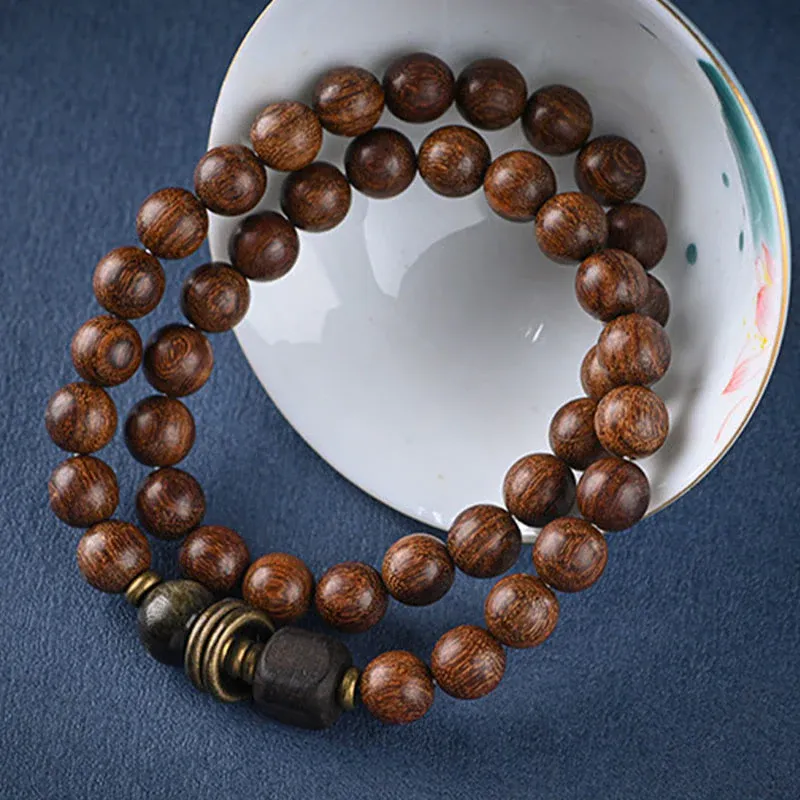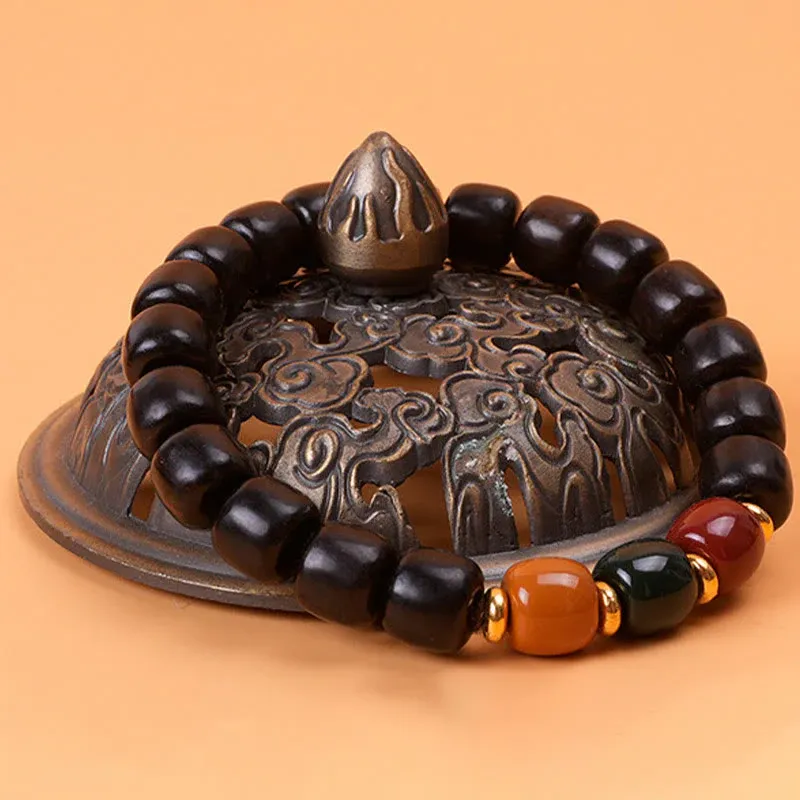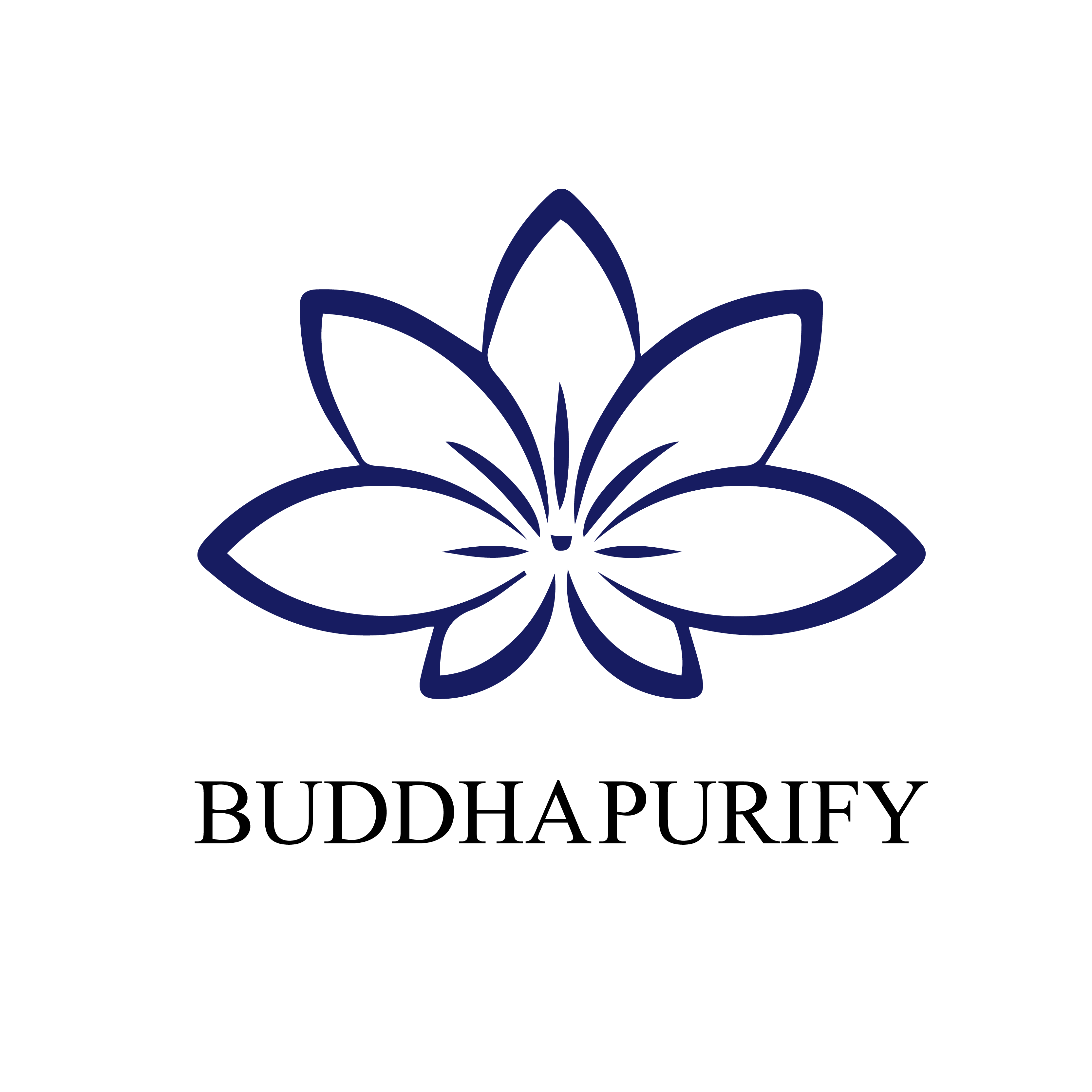Ebony: The History and Cultural Significance of the Divine Wood of the East
Ebony (Diospyros ebenum Koen.) also known as “Yinchenmu” (submerged wood), combines the ancient elegance of wood with the spiritual essence of stone. It is often referred to as the "Divine Wood of the East" and "Plant Mummy." Formed when trees and other plant life are buried under ancient riverbeds and low-lying areas by earthquakes, floods, or mudslides, these trees become submerged in mud. In an oxygen-deprived and high-pressure environment, with the help of bacteria and other microorganisms, the wood undergoes carbonization over millions of years, turning into ebony. Hence, it is also called “carbonized wood.” Throughout history, ebony has been used to ward off evil and is fashioned into crafts, Buddhist statues, and protective amulets. As the ancient saying goes, "Having a piece of ebony at home is better than a chest full of treasure." Today’s "ebony" refers to a type of rosewood, and in the timber market, "ebony" typically refers to black African ebony and East African blackwood, both of which are categorized as tree species.
Characteristics of Ebony
Ebony is known for its hardness and typically appears in shades of dark brown, black-red, golden, or yellow-brown. The cut surface of ebony is smooth, with fine grain. When polished correctly, it can achieve a mirror-like gloss. In some cases, the wood quality of ebony surpasses that of rosewood. It is known for its durability, as it does not fade, decay, or attract insects, making it an ideal material for creating art, antique furniture, and decorative pieces. Ebony is a precious human heritage, and after processing, it becomes a unique and valuable form of art.
Key Features:
Ebony, known for its hardness, comes in a range of colors including dark brown, black-red, golden, and yellow-brown. Its smooth surface and fine grain make it an ideal material for creating high-quality polished artifacts. Additionally, ebony is highly resistant to decay and pests, making it a preferred choice for art and furniture. Archaeologists have also used ebony to reconstruct ancient environments, such as in the mystery of the ivory unearthed at Sanxingdui. Naturally shaped ebony artworks are highly valuable collectibles.
Major Value:
The "Cihai" dictionary describes ebony, also known as “submerged wood,” as timber buried underground due to geological changes. In regions like Sichuan, ebony is considered a precious human heritage, often praised as the “Divine Wood of the East.” After being carefully processed, ebony transforms into an extraordinary artistic creation, revered for its rich and mystical qualities.
Formation Process:
Ancient ebony, also called "Yinchenmu," is formed over a span of 2,800 to 8,000 years, not quite long enough to become petrified wood but still undergoing a significant carbonization process. Ebony trees, such as nanmu, red sandalwood, and ironwood, are buried by natural disasters like floods and earthquakes in oxygen-poor and high-pressure conditions. Over thousands or even millions of years, these trees slowly carbonize into what we now call ebony. Due to the variations in species, the market value of ebony differs, with the gold-thread nanmu being the most expensive, priced between 80,000 to 150,000 RMB per cubic meter.
Natural Characteristics:
Due to its typically black appearance, submerged wood from the Sichuan region is commonly referred to as "ebony." It is distinct from the "ebony" defined in China’s rosewood standards. Ebony is formed from trees that were buried under ancient riverbeds over 2,000 to 40,000 years ago, carbonized through natural processes. Some ebony is highly fragile and crumbles easily due to extensive carbonization.
In the Sichuan Basin, the mystical ebony of the Sanxingdui civilization is considered a precious relic of ancient Shu culture. It has earned the title of "living fossil" due to its long history and enduring qualities. The ancient riverbed near Sanxingdui is one of the most concentrated areas of ebony in the world. Carbon-14 tests conducted by China University of Geosciences have dated the ebony found there to be 3,200 ± 50 years old.
Species of Trees That Form Ebony:
Various species of trees can form ebony, including poplar, oak, camphor, nanmu (gold-thread nanmu and small-leaf nanmu), red sandalwood, yew, and more. Some species, such as nanmu and camphor, produce ebony with a distinct fragrance, though not all submerged woods retain a scent.
Unique Traits:
Ebony is known for its exceptional hardness, with ironwood being the hardest and red sandalwood the softest. The appearance of ebony varies depending on the species. For example, ancient red sandalwood buried for over 3,000 years may have a black exterior and red interior, while ancient gold-thread nanmu buried for over 4,000 years may have a black exterior and yellow interior. Ironwood ebony, typically fully black both inside and out, is often over 5,000 years old. Not all ancient woods can become ebony, and not all black-colored wood is considered ebony.
Modern Ebony:
In the modern timber market, "ebony" refers to black African ebony, a tree species categorized under national rosewood standards. Modern ebony comes in three primary types: pure black ebony, green ebony, and striped ebony. In Japan, all ebony is referred to as "blackwood," which is further classified based on color and pattern.
Cultural Significance of Ebony:
The ancient and mysterious aura of ebony gives each piece a deep cultural and historical significance. Ebony is not only a symbol of material wealth but also a spiritual anchor, guiding people through time and space to experience the tranquility and dignity of the ancient world.
Brand Introduction: BuddhaPurify
BuddhaPurify is a brand deeply rooted in the rich heritage of Chinese traditional culture and Buddhist practices. Our mission is to offer a unique blend of ancient wisdom and modern elegance through our products, which are designed to enhance spiritual well-being, personal growth, and holistic health.
Foundation and Philosophy
Inspired by the timeless teachings of Buddhism and the profound traditions of Chinese culture, BuddhaPurify is dedicated to providing products that reflect the serene and enlightened aspects of these ancient philosophies. Our brand is built on the principles of mindfulness, purity, and spiritual harmony, aiming to bring balance and tranquility to our customers' lives.
Cultural Enrichment
We believe in the power of cultural enrichment and strive to educate and inspire our customers through the stories and meanings behind our products. Our brand seeks to bridge the gap between traditional spiritual practices and contemporary life, offering products that resonate with both ancient wisdom and modern sensibilities.
Conclusion
BuddhaPurify is more than just a brand; it is a journey into the heart of Chinese traditional culture and Buddhist spirituality. Through our thoughtfully curated products, we aim to support your quest for inner peace, spiritual growth, and a balanced life. Explore our collection and experience the harmonious blend of tradition and tranquility that defines BuddhaPurify.





